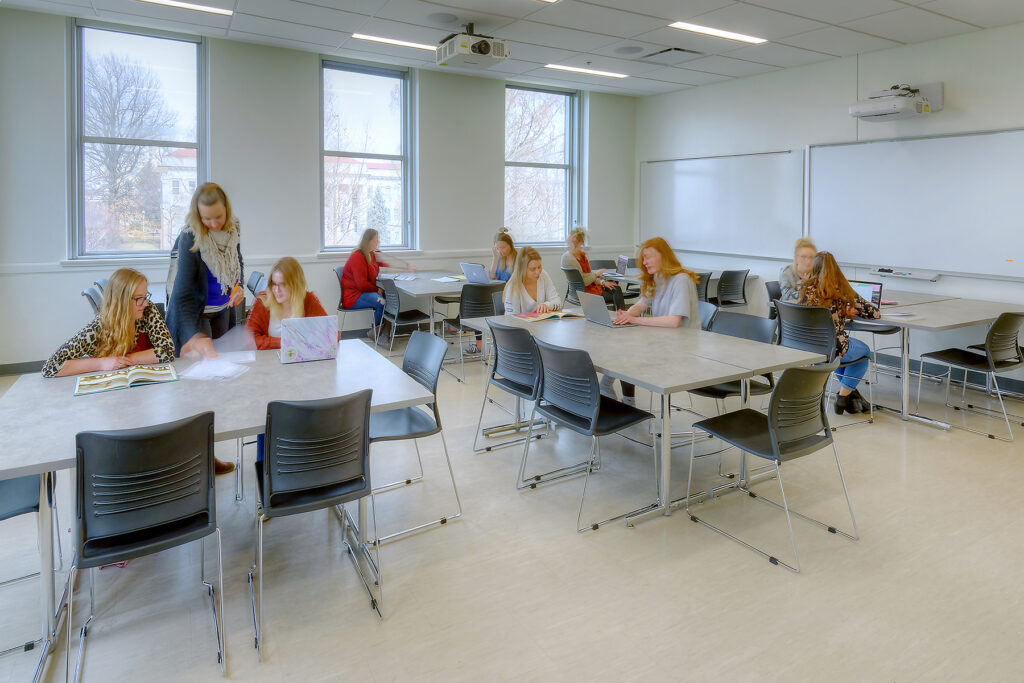
Hill Hall, Missouri State University
Springfield, MO
- Tagged under:
- Higher Ed

Metrics
- Size:
- 63,000 sf
- Specialisms:
- Acoustics; AV, Security & Telecom; MEPT Engineering
Built in 1924, Hill Hall is one of three original buildings on the Missouri State University campus, representing a cornerstone of the institution’s historic foundation. Located in Springfield, Missouri, the four-story facility was overdue for substantial upgrades. The aging systems and outdated equipment could no longer serve the College of Education and the Department of Psychology. Academic spaces and faculty offices lacked functionality, including adequate technology infrastructure.
As a result, the University’s goal was to modernize and upgrade the building to better respond to the needs of students and faculty while embracing the architectural history.
BranchPattern assisted the University by working with stakeholders to create audiovisual, telecommunication, electronic security and acoustical planning and design solutions. These solutions provided right-sized faculty offices, integrated more collaborative spaces throughout for students and aligned all academic spaces with the latest technology and pedagogical needs.

Audiovisual Technology
With low ceilings and various existing impediments to the building systems, finding space to add acoustical separation and space for distribution of network cabling and Wi-Fi was a major challenge. Our team focused on:
- Careful planning and coordination of the technology in the space.
- Designing sound isolation between spaces and background noise control from building systems to help ensure the interior acoustics were conducive to learning. Working with slim floor and wall cavities to layout systems that fulfilled both technical and aesthetic requirements.
- Designing audiovisual technology that allowed project-based and recorded instruction to enhance the existing lecture spaces as well as promote more student engagement.

The sensitive renovation of this historic building not only added more capabilities, but also fostered changes to the learning environment and to the ways teachers and students interact with information and with each other in the space. BranchPattern’s involvement helped maximize the educational spaces and ensure transformative learning experiences for students.

